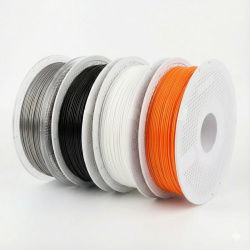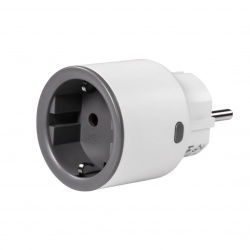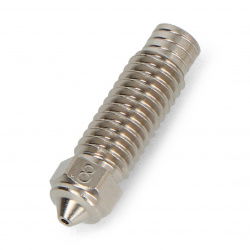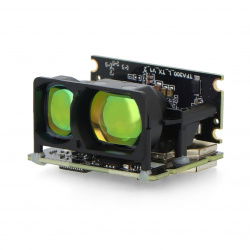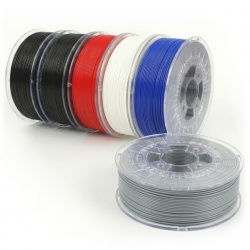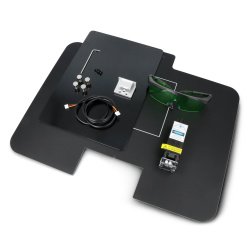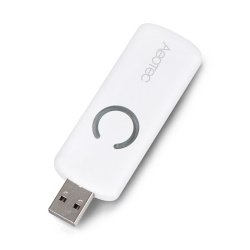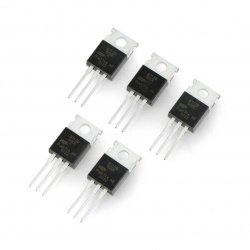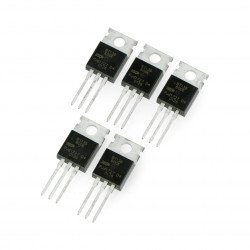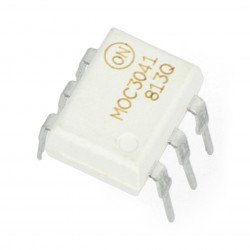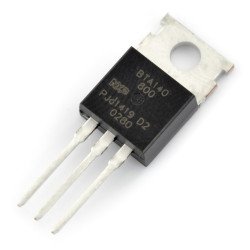A triac is an alternating current triode, a semiconductor device that is designed to work with alternating current. It is useful where bipolar and field transistors cannot be used because they in turn cannot work with alternating current. The exception is when we separate the positive part of the cycle from the negative part and use a separate transistor for each of them. However, we can avoid this with the use of triacs. So we can consider that the triac is a kind of transistor. It is used in power and power control systems in AC devices. It can be placed in an electric heater for example. Individual triacs are different from each other, which allows to precisely adjust them to the specifics of the equipment and conditions in which it works. Moreover, triacs are available in our store as single products, as well as in sets consisting of several elements, triacs of the same size and parameters.
Triaki (Symistory) - Elementy półprzewodnikowe
Triac BT139-600E 600V/16A - THT - 5pcs.
Voltage Vdrm: 600 V Current It: 16 A. Current of Ig gate: max. 25 mA. Case: TO220.Optotriac MOC3021 400V/0,1A - THT - 5pcs.
The driver is designed to work with mains voltage. Voltage Vdrm: 400 V Current It: 0.1 A. Case: DIP-6 .Triac BT138-600E 600V/12A - THT - 5pcs.
Vdrm voltage: 600 V. Current It: 12 A. Goal current Ig: max. 25 mA. Enclosure: TO220.Triac BT136-600E 600V/4A - THT
Voltage Vdrm: 600 V Current It: 4 A. Current of Ig gate: max. 25 mA. Case: TO220. Items are sold in sets of 5 pieces.Optotriac MOC3041 400V/1A - THT
The driver is designed to work with mains voltage. Voltage Vdrm: 400 V; current It: 1 A. type of case: DIP-6 . It has a built-in module switch in zero.Triac BTA140-800 800V/25A - THT
Vdrm voltage: 800 V. It current: 25 A. Gate current Ig: 25 mA. Housing: TO220.See also
What is a triac? – Triac control - Key to control the flow of alternating current
Thyristor and triac - Triacs are a subset of thyristors. They differ from them in that they allow current to flow in both directions , while a thyristor can only conduct current in one direction (semiconductor structure). Most components of this type can be triggered by applying a positive or negative voltage to the gate (a thyristor requires a positive voltage). Once triggered, both elements behave the same - they continue to be open even though the gate current stops, until the current flowing through the system drops below a certain level called the holding current. This is a kind of triac control .
Triac structure and principle of triac operation
The triac is composed of four layers of PNPN semiconductors . The outer layers of this element form current leads, called anodes, between which the operating current of the system flows. The control pin, i.e. the base, comes from the inner layer. When a positive or negative voltage is applied to the base, the system begins to conduct between the anodes. Even after the voltage from the base is turned off, current will flow between the triac anodes. Only when the voltage between the anodes drops below a certain threshold will the current flow stop.
Triac - Application - Potential applications
The bidirectional nature of triacs makes them convenient alternating current switches . Moreover, the use of a trigger with a controlled phase angle of the alternating current in the circuit allows control of the average current flowing to the load (phase control). This is commonly used to control the speed of an AC motor, in dimmers, or to control electric heaters. Such systems are extremely simple and consist only of a zero-crossing voltage detector and a triac driver.
Another common application is triac power regulators. The triacs available in our store range include: the so-called forward current max (maximum) and reverse voltage max (maximum). In the integrated circuits section you can also find transistors , sockets for integrated circuits , interfaces and much more. If you have any additional questions or concerns, please contact our experienced advisors via e-mail, telephone or the contact form available on the website.
Triacs - FAQ
Semiconductor elements are electronic components made of semiconductor materials. Semiconductor elements include, among others, transistors , triacs, thyristors and diodes .
Semiconductor elements are made of semiconductor materials, i.e. substances with electrical conductivity ranging between dielectrics (insulators) and conductors.
Semiconductors are most often solids with covalent bonds, with a single-crystalline or polycrystalline structure.
Semiconductors include various elements and chemical compounds, including silicon, germanium, selenium and gallium arsenide.































































































































































































































































































































